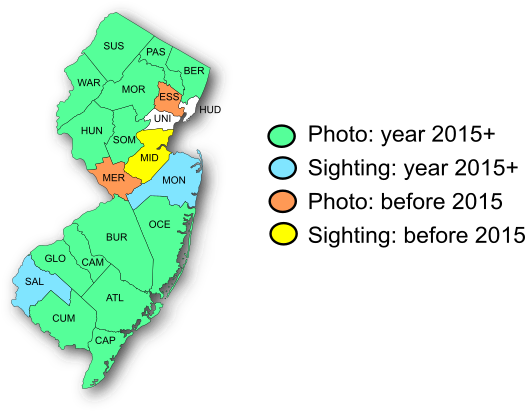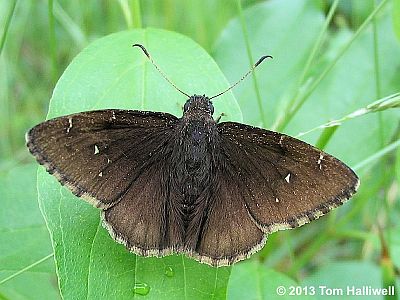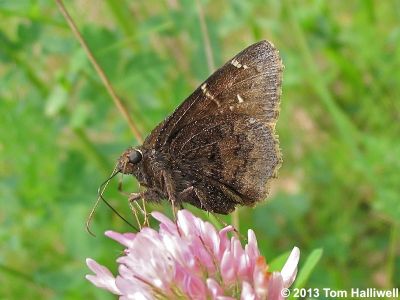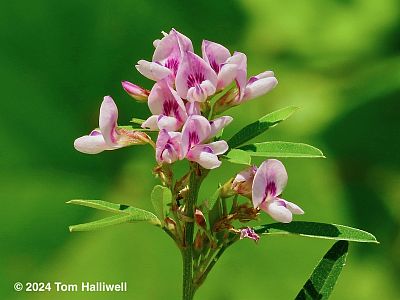New Jersey Butterfly Club
A chapter of the North American Butterfly Association (NABA)
Northern Cloudywing
Thorybes pylades
Identification: Small—1.5” (smaller than Cabbage White). Above: FW and HW dark brown, with several variable small white spots in forewing. The spots are not aligned in a row, and Northern lacks the hourglass-shaped mark seen in Southern Cloudywing near leading edge of FW. When fresh, both wings have pale tan fringes checked with brown. Below: FW and HW mottled dark brown, with slightly contrasting purplish-brown bands on HW and small pale marks visible in FW. Shows pale frosting along wing margins when fresh. Other: Palps ("face") brown; white ring over eye (if present) is interrupted; and antennal clubs lack white mark at bend near tip.
NJ Status and Distribution: Resident. Fairly common and widespread throughout. Less common than Southern Cloudywing in South Jersey; the reverse is true in North Jersey.

Habitat: Dry to moist fields, including hayfields. Readily nectars, but not often reported from gardens.
Flight Period: One brood, from early May to late July, with a peak from late May to late June. Extreme dates: North Jersey 5/5—7/26; South Jersey 4/17—7/31.
Caterpillar Food Plants: Legumes such as clovers (Trifolium), bush-clovers (Lespedeza), and tick-trefoils (Desmodium).
Overwintering Stage: Caterpillar.
Good Locations: Sourland Mountain Preserve, Voorhees SP, Mountainside Park, Lizard Tail Swamp WMA, MacNamara WMA, Beaver Swamp WMA.
Comments: Can be difficult to separate from Southern Cloudywing. Both species overlap in space and time and share the same habitats, so hybridization is possible, which may account for some individuals that are intermediate in appearance. Three marks are often used to attempt the identification: (1) Northern has smaller FW spots above, and lacks an hourglass-shaped spot at middle of leading edge of FW; (2) Northern's "face" is brown and its white eyeline is thin and interrupted, while Southern has a white "face" and a bold white line curving completely over the eye; and (3) Northern lacks the pale patch at bend of antennal tip usually seen in Southern. If your butterfly doesn't display all 3 characteristics of either Northern or Southern, consider your ID to be tentative. We've all had to write "cloudywing sp." in our field notes at one time or other!
Both cloudywings are somewhat unusual in the sense that the same plants are very important to both caterpillars and adults. Caterpillars feed exclusively on legumes, and adults often nectar at clovers such as Red Clover (Trifolium pratense) and peas such as Everlasting Pea (Lathyrus latifolium).


